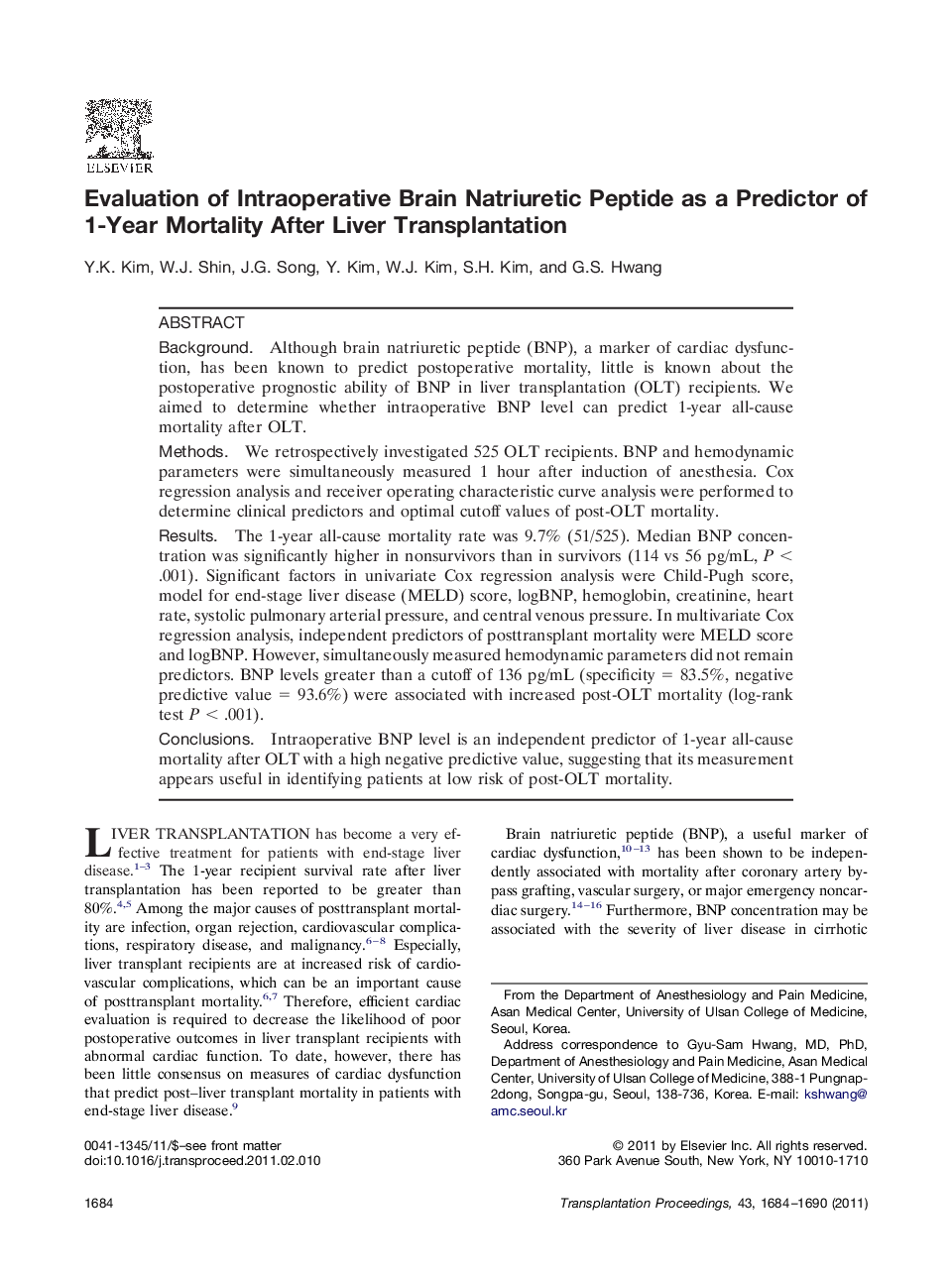| Article ID | Journal | Published Year | Pages | File Type |
|---|---|---|---|---|
| 6249279 | Transplantation Proceedings | 2011 | 7 Pages |
BackgroundAlthough brain natriuretic peptide (BNP), a marker of cardiac dysfunction, has been known to predict postoperative mortality, little is known about the postoperative prognostic ability of BNP in liver transplantation (OLT) recipients. We aimed to determine whether intraoperative BNP level can predict 1-year all-cause mortality after OLT.MethodsWe retrospectively investigated 525 OLT recipients. BNP and hemodynamic parameters were simultaneously measured 1 hour after induction of anesthesia. Cox regression analysis and receiver operating characteristic curve analysis were performed to determine clinical predictors and optimal cutoff values of post-OLT mortality.ResultsThe 1-year all-cause mortality rate was 9.7% (51/525). Median BNP concentration was significantly higher in nonsurvivors than in survivors (114 vs 56 pg/mL, P < .001). Significant factors in univariate Cox regression analysis were Child-Pugh score, model for end-stage liver disease (MELD) score, logBNP, hemoglobin, creatinine, heart rate, systolic pulmonary arterial pressure, and central venous pressure. In multivariate Cox regression analysis, independent predictors of posttransplant mortality were MELD score and logBNP. However, simultaneously measured hemodynamic parameters did not remain predictors. BNP levels greater than a cutoff of 136 pg/mL (specificity = 83.5%, negative predictive value = 93.6%) were associated with increased post-OLT mortality (log-rank test P < .001).ConclusionsIntraoperative BNP level is an independent predictor of 1-year all-cause mortality after OLT with a high negative predictive value, suggesting that its measurement appears useful in identifying patients at low risk of post-OLT mortality.
